Collins New Naturalist Library 91
Nature Conservation
Peter Marren
Editors Editors Editors’ Preface Author’s Foreword 1 Introduction: Where We Are Now PART I Dramatis Personae 2 The Official Conservation Agencies 3 The Voluntary Army 4 Conservation Politics: SSSIs and the Law PART II Wildlife Habitats 5 Nature Reserves 6 The Farmed Environment 7 Woods and Forests 8 Bricks and Water PART III Living With Wildlife 9 Development: Causes Célèbres 10 Animals That Get In Our Way 11 Biodiversity 12 Sea Eagles and Parrot’s Feathers: Invading and Settling 13 Summing Up: Whither Nature Conservation? Appendices References Index Plates Praise Copyright About the Publisher
Sarah A. Corbet ScD
S.M.Walters, ScD, VMH
Prof. Richard West, ScD, FRS, FGS
David Streeter, FIBiol
Derek A. Ratcliffe
The aim of this series is to interest the general reader in the wildlife of Britain by recapturing the enquiring spirit of the old naturalists. The editors believe that the natural pride of the British public in the native flora and fauna, to which must be added concern for their conservation, is best fostered by maintaining a high standard of accuracy combined with clarity of exposition in presenting the results of modern scientific research.
Dedicated to Derek Ratcliffe for reminding us that means should have ends, and that behind the posturing it is wildlife that matters
Cover Page
Title Page Collins New Naturalist Library 91
Editors Editors Editors Editors’ Preface Author’s Foreword 1 Introduction: Where We Are Now PART I Dramatis Personae 2 The Official Conservation Agencies 3 The Voluntary Army 4 Conservation Politics: SSSIs and the Law PART II Wildlife Habitats 5 Nature Reserves 6 The Farmed Environment 7 Woods and Forests 8 Bricks and Water PART III Living With Wildlife 9 Development: Causes Célèbres 10 Animals That Get In Our Way 11 Biodiversity 12 Sea Eagles and Parrot’s Feathers: Invading and Settling 13 Summing Up: Whither Nature Conservation? Appendices References Index Plates Praise Copyright About the Publisher Sarah A. Corbet ScD S.M.Walters, ScD, VMH Prof. Richard West, ScD, FRS, FGS David Streeter, FIBiol Derek A. Ratcliffe The aim of this series is to interest the general reader in the wildlife of Britain by recapturing the enquiring spirit of the old naturalists. The editors believe that the natural pride of the British public in the native flora and fauna, to which must be added concern for their conservation, is best fostered by maintaining a high standard of accuracy combined with clarity of exposition in presenting the results of modern scientific research.
Editors’ Preface
Author’s Foreword
1 Introduction: Where We Are Now
PART I Dramatis Personae
2 The Official Conservation Agencies
3 The Voluntary Army
4 Conservation Politics: SSSIs and the Law
PART II Wildlife Habitats
5 Nature Reserves
6 The Farmed Environment
7 Woods and Forests
8 Bricks and Water
PART III Living With Wildlife
9 Development: Causes Célèbres
10 Animals That Get In Our Way
11 Biodiversity
12 Sea Eagles and Parrot’s Feathers: Invading and Settling
13 Summing Up: Whither Nature Conservation?
Appendices
References
Index
Plates
Praise
Copyright
About the Publisher
It is 32 years since Dudley Stamp’s New Naturalist on Nature Conservation in Britain appeared. Published posthumously, it summarised events and progress up to 1965, concentrating on the dominant role of the official Nature Conservancy. Since then, nature conservation has become much more fraught and politicised. It is in continual conflict with the forces of modern ‘progress’, in the increasing demands made on the natural environment by agriculture, forestry, mineral extraction, water use, energy supply, transport, urban development, recreation and defence. The voluntary bodies for nature conservation have also grown to rival the official side in importance. These massive shifts require a completely new book that takes over the story where Dudley Stamp left off.
Peter Marren is the acclaimed author of the 50th anniversary volume, The New Naturalists (1995), whose earlier career was in the Nature Conservancy Council. As a regional staff member in Scotland and later England, he saw things from the front line of nature conservation. His later role, in compiling its Annual Report, gave him an overview of the whole wide field of activities and issues in which the NCC became involved, and an insight into the frequently political nature of skirmishes with opposing vested interests. Then the NCC was devolved, and Peter found himself in English Nature, with a much reduced geographical remit and a new management-cum-public relations style. Unable to stand the combination of internal regimentation and external timidity, he resigned, to start a new career as a freelance writer on wildlife and its conservation. To this he brought a distinctive style, of fluent prose allied to sardonic wit, winning many fans who relish the appearance of his next work.
Peter’s perceptive eye has ranged over an astonishingly broad field in this new book, and he has told its complicated story with his usual flair. This is an honest appraisal of the net results of all the years of striving on behalf of wild nature in Britain – an assessment of the balance between success and failure. He puts all aspects of the business under the microscope: the organisations concerned, the threats to nature, the measures for dealing with these, the politics involved, and the outcomes on the ground. The book is analytical as well as factual, but enlivened by its author’s characteristic flashes of humour. This re-evaluation shows that, despite many successes in saving important wild places, plants and animals, losses have also continued on an unacceptable scale. Nature reserves do, at least, give us some tangible reward for all the effort, but the results from the persuasion approach are often more difficult to measure. In giving us this invaluable reference work, Peter Marren has also conveyed the richness and splendour of our national capital of wild nature, and its importance to our cultural heritage. Its defenders also have sombre lessons to learn from this synthesis if they are to improve their performance during this new millennium.
This is the first New Naturalist book on nature conservation since 1969. Its predecessor was written by Dudley Stamp, a geography professor and an influential voice in rural planning matters in the 1940s and 1950s. He was well qualified to report the early development of nature conservation in Britain, having been a long-time Board member of the Nature Conservancy, the original wildlife agency which he helped to set up in 1949. Stamp was also a well-practised writer of textbooks on geography and land use, and had contributed no fewer than four volumes to the New Naturalist library, including the outstandingly successful Britain’s Structure and Scenery. Nature Conservation in Britain was his last book, published after Stamp’s untimely death in 1966. It was a mellow look back at the past, broadly successful, quarter-century, in which conservation had developed from the hopes of a few naturalists to a broad-based going concern with its own mini-department in government. It was a relatively short book, concentrating on the work of the Nature Conservancy and the county wildlife trusts, and listing nearly all the nature reserves existing at that time.
Читать дальше

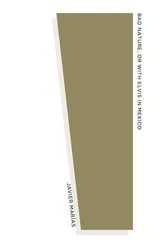
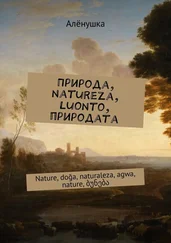
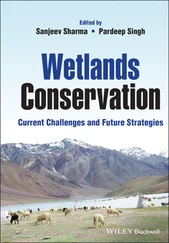

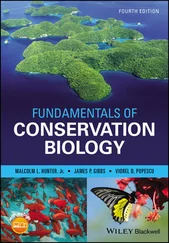
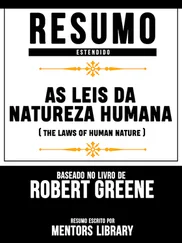


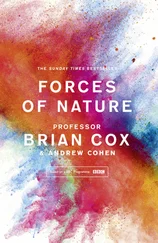

![Various - Birds and Nature, Vol. 12 No. 5 [December 1902]](/books/745517/various-birds-and-nature-vol-12-no-5-december-thumb.webp)
![Various - Birds and Nature Vol. 11 No. 2 [February 1902]](/books/745533/various-birds-and-nature-vol-11-no-2-february-1-thumb.webp)